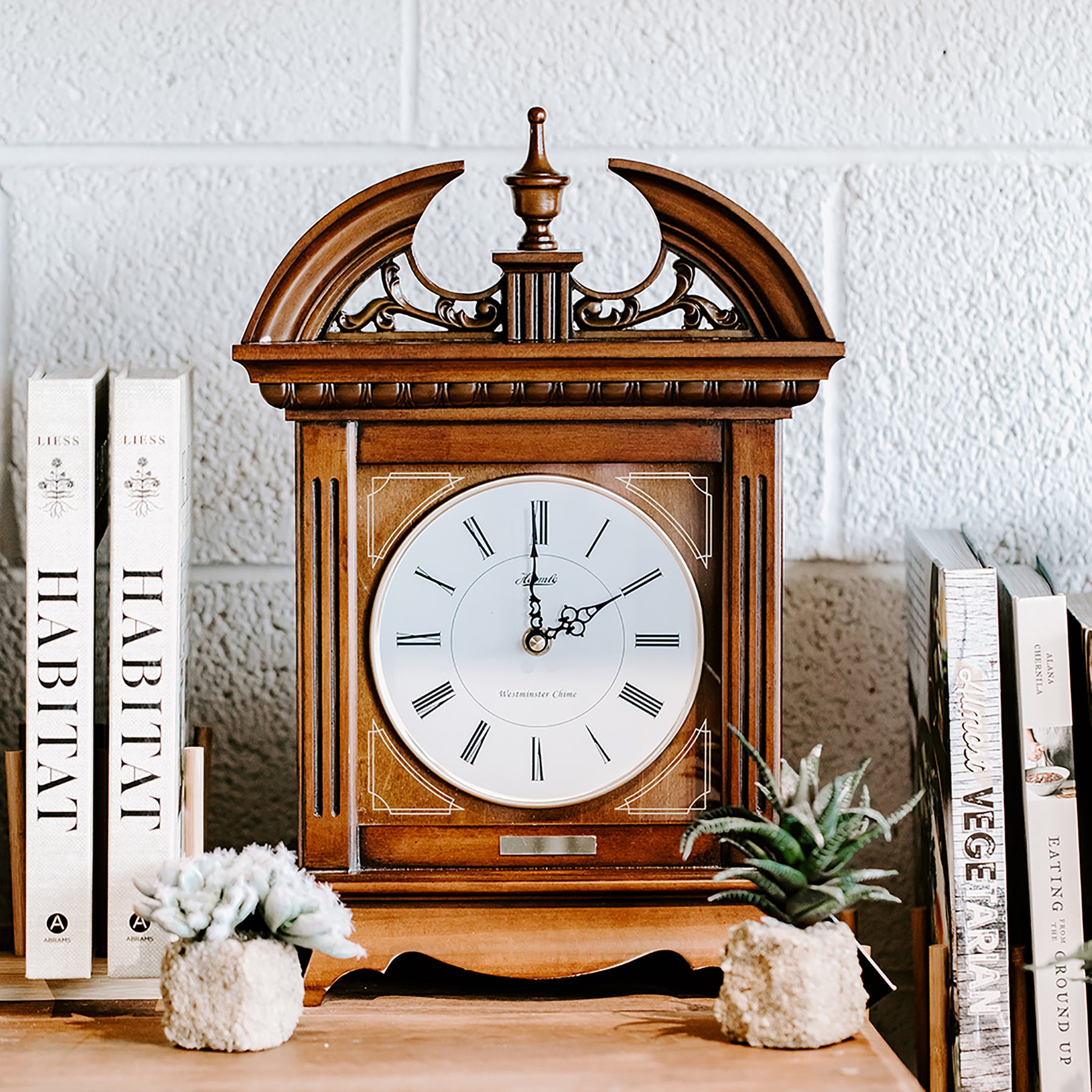1-(800)-642-0011
1-(800)-642-0011

In our current age of digital clocks, it’s easy to forget that mechanical and quartz movement clocks work quite a bit differently. Setting the time and getting it to sync correctly can be a bit of a challenge, but with the right information, you can have your beautiful new clock up and running in no time.
You should always make sure to use the minute land (the long hand) when setting the time. You can move the hand clockwise or counter clockwise, but the direction does affect what you should do. If you move it counterclockwise, you don’t need to stop until you get the time correctly set, but if you move the hand clockwise, you will need to stop at each quarter hour and let the chime play (it won’t damage the clock if you skip over the quarter-hour chimes, but you will need to check it an hour after the time has been set to make sure that the chimes have corrected themselves and are correctly synched again). If you have an antique clock, do not turn the hands counterclockwise to set it unless you’ve consulted a clock shop or clock repairman to avoid damaging the movement.
Setting the time on a quartz movement does make a bit of a difference in how you set the clock. Rather than moving the hand in either direction (clockwise or counter-clockwise), you want to always move the minute hand in a clockwise direction with a quartz movement. Be sure to check your clock’s specific instruction manual on how to set the time, or call Emperor Clock’s tech support for help with your specific clock, as setting the clock can vary depending on the specific movement that you have.
To make sure the clock is keeping time correctly, check it one hour after setting the time. Just set an alarm on your cell phone, or set your kitchen timer for an hour so you’ll remember to check it. If the time is correct, that’s it! If not, keep reading for more troubleshooting help.
Sometimes while setting the clock, the hour hand might accidentally get moved or ‘dragged’, which would cause the clock to strike the incorrect hour. This is why it is important to only move the minute hand until the clock reads the correct time, either clockwise or counter-clockwise. To help avoid accidentally dragging the hour hand, keep your finger close to the end of the minute hand while setting the clock. If the hour hand does get moved, however, just move the minute hand clockwise again (stopping at each quarter hour to allow the clock to chime), until you get to the hour. Listen to the chime and count the strikes—if the chime is wrong, move the hour hand to whatever the clock is striking. Then you can reset the clock to the correct time using the minute hand. This is the only time you should ever need to use the hour hand.
Aside from the obvious time changes such as daylight savings, the only times you should need to set your clock is if you have a mechanical movement that has wound down (i.e., you’ve gone too long between winding), or if your clock has a pendulum that has been manually stopped. Once your clock is set, it should keep the time accurately by itself. If you notice that it is no longer keeping time accurately, you may need to check the batteries (for a quartz movement), or call Emperor Clock tech support for help troubleshooting your clock’s movement. As always, your local clock shop is a great resource for solving any issues with clocks that you may have.
Just keep these 5 tips in mind and you’re as good as gold! Is there anything we’ve missed? Are you enjoying our latest posts? Please leave a review to let us know how we’re doing!
If you have a topic you’d like more information about, leave a comment below!